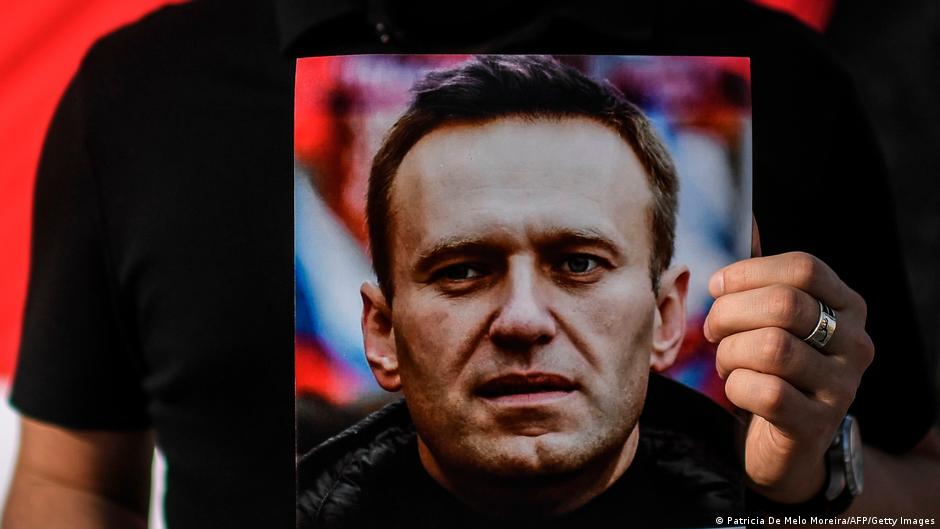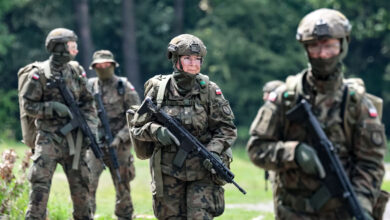
Freshly shaved head, tired eyes, poker face: Alexei Navalny, Russia’s most high-profile prisoner, conveyed a first photo and message to his social media accounts from detention on Monday. “I never imagined it was possible to set up a real concentration camp 100 kilometers from Moscow,” he wrote on his Facebook and Instagram profiles.
A prison within the penal colony
A few days ago, the 44-year-old opposition politician was transferred to Penal Colony Number 2 (IK-2) in the small provincial town of Pokrov, around two hours’ drive east of Moscow. This is where he will spend the next two and a half years.
At the beginning of February, a Moscow court commuted his former suspended sentence for alleged economic crimes into a prison term, because it said he had failed to comply with his obligation to report for the duration of the suspension. This is a reference to the period when Navalny was in Germany, where he was receiving medical treatment and recuperating after being poisoned with a nerve agent in Russia.
In the short post on social media, which it seems Navalny conveyed via his lawyer, he describes his penal colony in typically ironic fashion as a “friendly concentration camp” where bad language is prohibited and everything strictly regulated. He writes that, so far, he has “not seen any violence, or even a hint of it,” but that when he sees the prisoners standing stiffly to attention, “afraid even to turn their heads,” he can “easily believe the numerous stories that not long ago people were beaten to within an inch of their lives here with wooden hammers.”
Navalny is being closely monitored, as the law enforcement agencies have categorized him a high-escape risk. At night, he writes, he is woken every hour when a guard comes in, films him with a video camera, and states the time out loud. Navalny also sends greetings to his supporters from “Sector of Enhanced Control A.” According to Russian media, this is in effect a prison within the IK-2 penal colony, where the rules are even stricter.
Solitary confinement, warnings as psychological pressure
The harsh conditions in Russian penal colonies have been infamous for decades. Unofficially, a distinction is made between “red” and “black” prisons. In “red” prisons, the administration apparently determines everything and uses prisoners to help enforce the strict rules, whereas in “black” penal colonies the convicts have more say, and are said to enjoy certain freedoms.
The 36-year-old activist Konstantin Kotov told DW that the penal colony in Pokrov where Navalny is serving his sentence is classed as “red.” Kotov has done time there himself: In 2019, he was sentenced to one and a half years’ imprisonment for violating the right of assembly in Moscow. He was freed only recently.
Kotov says he was not himself the victim of physical violence, but that he saw and heard other prisoners being beaten. “Blows to the heel are especially common,” he explains. “You lie on the ground, take off your shoes, raise your legs, and then they beat you on your feet, with the wooden leg of a stool, for example. It’s extremely painful.”
Kotov doesn’t believe Navalny is at risk of similar punishment; rather, he thinks he is more likely to be subjected to psychological pressure, such as solitary confinement. This is what Kotov experienced during his imprisonment. There is very little contact with the outside world, he says, and hardly any conversation with other inmates, either.
Kotov says he was issued with six warnings. On one occasion, it was because another prisoner had given him his gloves. “I was admitted in November 2019; it was already winter, freezing cold, and I was supposed to be issued with gloves at the penal colony,” Kotov says. “But they told me they didn’t have any in the store.
In the colony, you spend a lot of time outdoors, an hour every morning and every evening while the roll is called, for example. During this, you have to hold your hands behind your back; you’re forbidden to put them in your pockets. I was freezing, and another prisoner gave me his gloves. In the end, we both got a warning.” Russian media report that other prisoners in IK-2 have described similar experiences.
Other reasons Kotov was issued with warnings during his time in prison included not greeting a member of the prison staff, or not buttoning the top button of his clothing. These warnings can lead to solitary confinement, he explains, and make it harder for a prisoner to secure an early release.
Prisoners can also end up in a quarantine unit, where particular emphasis is placed on discipline. “It’s not about isolating people who are sick, or making it easier for new arrivals to settle in. It’s about making prisoners suffer,” Kotov claims. For example, they are forced to “exercise 10 times a day,” and to give an account each time they are spoken to by a member of staff.
Will Navalny sew underpants for law enforcement officers?
As a new arrival, Navalny is still in quarantine. It’s not clear what sort of work he will be assigned in the penal colony. At the beginning of March, the Russian research platform “The Insider” reported that in recent years prisoners in IK-2 had sewn men’s underwear – including underpants destined for employees of the Russian state law enforcement agency.
By Roman Goncharenko




